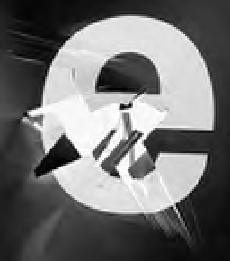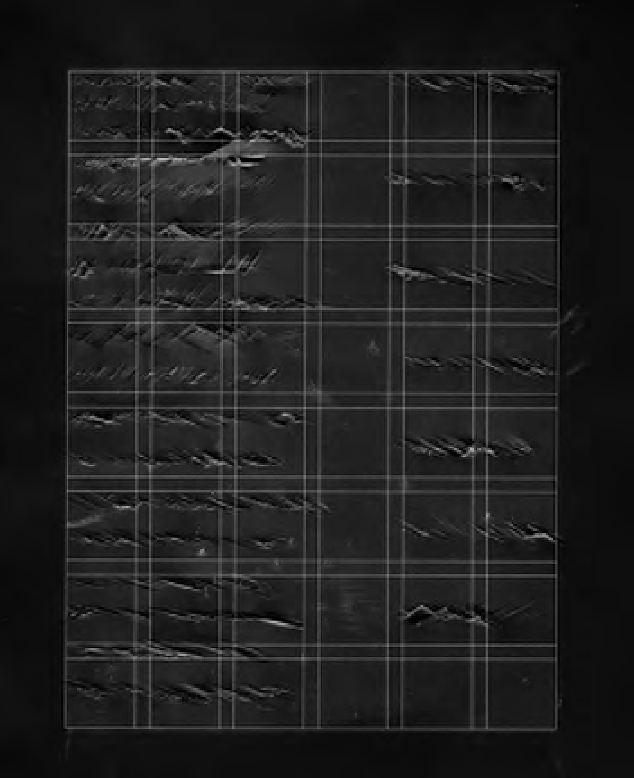Graphics Reference
In-Depth Information
12-27 to 12-29
Armed with an attitude described
by the late designer Paul Rand as the “play instinct,”
Bernhardi, rather unconsciously and spontaneously,
transformed typographic elements in search of
possible new forms and meaning.
Bernhardi responded to various
content using a wide variety of materials
and processes. Hand-drawn and computer-
generated elements were liberally combined
in search of uncommon visual effects.
Operations were quickly executed and
included cutting, slicing, tearing, crumpling,
scratching, scribbling, and taping (Figs.
12-27 to 12-29
). He repeated particular
actions until evocative and enigmatic forms
emerged, and he remained open to abruptly
breaking away in search of new typographic
effects (Fig.
12-30
). Working with physical
material drove the process.
Compositions developed by adding
and subtracting elements. Discarded parts,
such as excess paper trimmed from previous
exercises, were often used in subsequent
studies. Adding type provoked subtraction
and an urge to further tear at the surface.
Conversely, tearing suggested the adding of
new layers. Eventually, an abstract, formal
language emerged.
Previous experiments were combined
and manipulated into new forms using
a combination of tools and techniques.
For example, using the copy machine
unconventionally (Figs.
1
2-31 to 12-34
),
manipulating paper to suggest topographic
space (Fig.
12-35
), and photographing
through “windows” to expose hidden layers
(Fig.
12-36
) lent unusual visual effects.
12-27
12-28
12-29
12-30
In an extension
of automatic writing,
Bernhardi scratched
sentences onto a
typographic grid.












